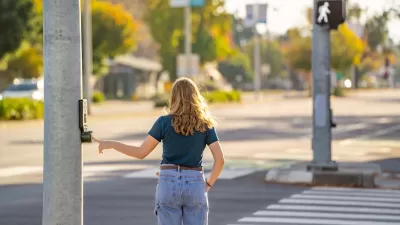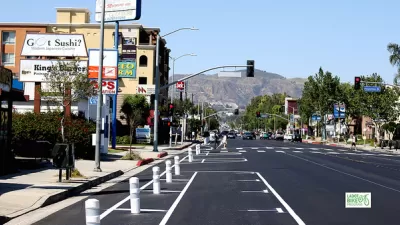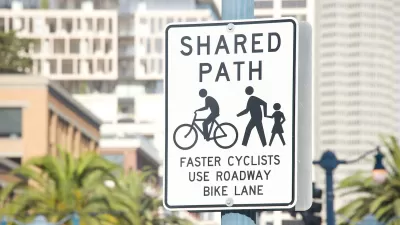A policy released by the California Department of Transportation in December will require Complete Streets elements in all state road projects.

The California Department of Transportation (Caltrans) has issued a new policy that "recognizes that streets are not only used for transportation but are also valuable community spaces," acknowledging the need to prioritize infrastructure for pedestrians, bike riders, and transit users in every Caltrans project. According to Melanie Curry, the policy solidifies the goals laid out in a prior Complete Streets plan from 2014. The new plan provides a list of "high-priority implementation actions" meant to train engineers and embed design flexibility and street safety design principles into Caltrans projects.
As Curry notes, "One thing the list reveals is that Caltrans is still taking the first steps towards truly incorporating Complete Streets into its projects, despite years of talking about it." Nevertheless, the new policy takes a stronger stance on Complete Streets elements, making them a required rather than recommended component of projects.
"The new policy states, unequivocally, that the priority of the state transportation department is 'to encourage and maximize walking, biking, transit, and passenger rail' for all kinds of reasons, including climate, health, equity, and environmental ones, as well as 'to foster socially and economically vibrant, thriving, and resilient communities.'" While Complete Streets advocates object to some of Caltrans' bike policies—such as allowing minimally protective sharrows on high-speed streets—the shift in focus could have a significant impact on how road projects across the state are designed and implemented.
FULL STORY: Caltrans Officially Embraces Complete Streets in All Projects

Manufactured Crisis: Losing the Nation’s Largest Source of Unsubsidized Affordable Housing
Manufactured housing communities have long been an affordable housing option for millions of people living in the U.S., but that affordability is disappearing rapidly. How did we get here?

Americans May Be Stuck — But Why?
Americans are moving a lot less than they once did, and that is a problem. While Yoni Applebaum, in his highly-publicized article Stuck, gets the reasons badly wrong, it's still important to ask: why are we moving so much less than before?

Using Old Oil and Gas Wells for Green Energy Storage
Penn State researchers have found that repurposing abandoned oil and gas wells for geothermal-assisted compressed-air energy storage can boost efficiency, reduce environmental risks, and support clean energy and job transitions.

Greening Oakland’s School Grounds
With help from community partners like the Trust for Public Land, Oakland Unified School District is turning barren, asphalt-covered schoolyards into vibrant, green spaces that support outdoor learning, play, and student well-being.

California Governor Suspends CEQA Reviews for Utilities in Fire Areas
Utility restoration efforts in areas affected by the January wildfires in Los Angeles will be exempt from environmental regulations to speed up the rebuilding of essential infrastructure.

Native American Communities Prepare to Lead on Environmental Stewardship
In the face of federal threats to public lands and conservation efforts, indigenous groups continue to model nature-centered conservation efforts.
Urban Design for Planners 1: Software Tools
This six-course series explores essential urban design concepts using open source software and equips planners with the tools they need to participate fully in the urban design process.
Planning for Universal Design
Learn the tools for implementing Universal Design in planning regulations.
Heyer Gruel & Associates PA
City of Moreno Valley
Institute for Housing and Urban Development Studies (IHS)
City of Grandview
Harvard GSD Executive Education
Salt Lake City
NYU Wagner Graduate School of Public Service
City of Cambridge, Maryland





























